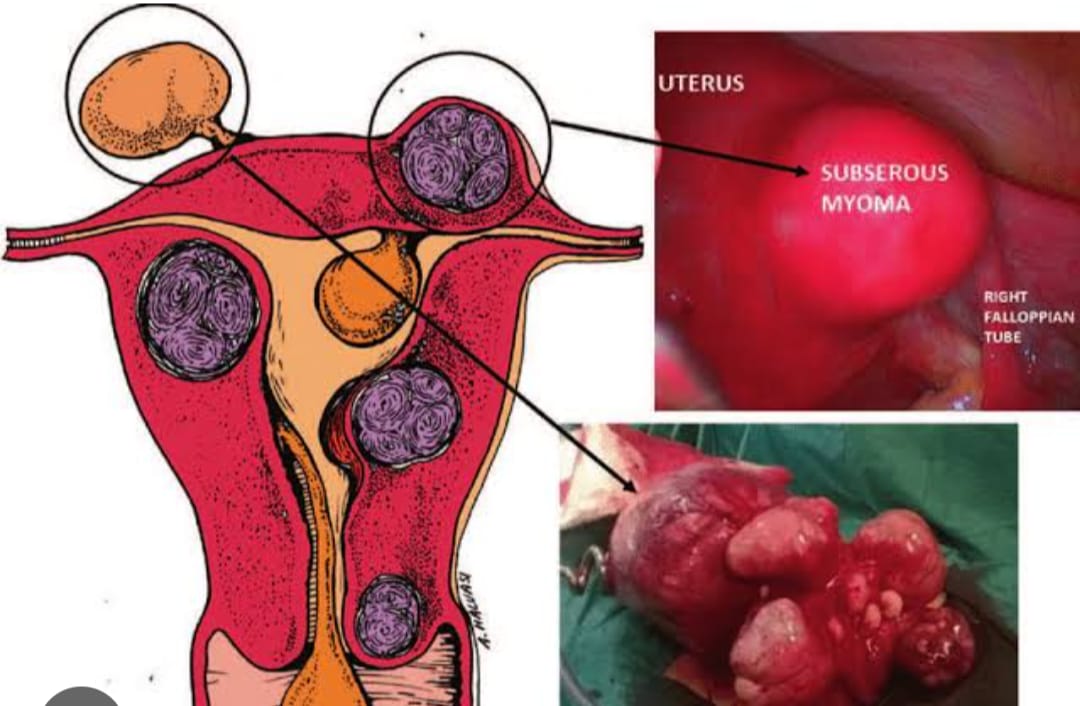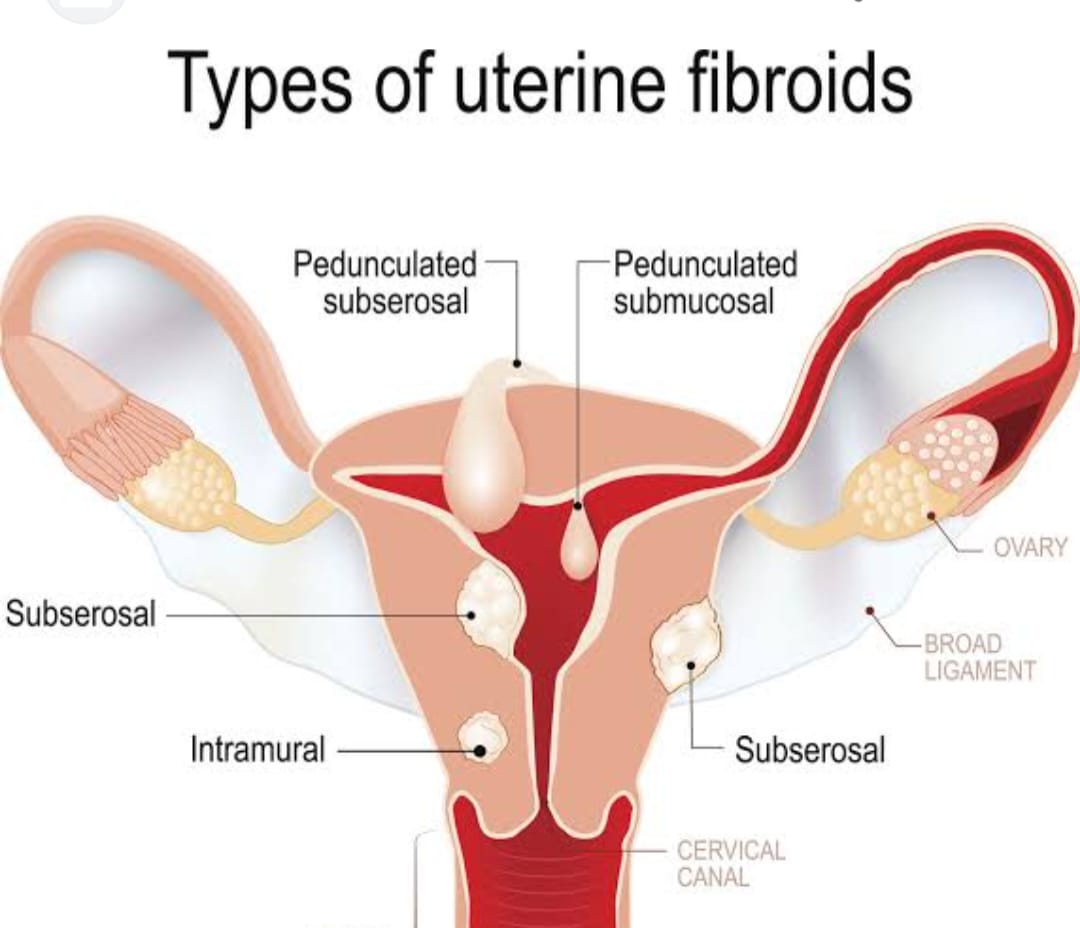Fibroid or Uterine Myomas
Fibroids are abnormal growths that develop in or on a woman’s uterus. Sometimes these tumors become quite large and cause severe abdominal pain and heavy periods. In other cases, they cause no signs or symptoms at all. The growths are typically benign, or noncancerous.
The cause of fibroids is unknown.
Fibroids are also known by the following names:
leiomyomas
myomas
uterine myomas
fibromas
They can range in size from very tiny to larger than a cantaloupe (melon). Occasionally, they can cause the uterus to grow to the size of a five-month pregnancy. In most cases, there is more than one fibroid in the uterus. While fibroid do not always cause symptoms, their size and location can lead to problems for some women, including pain and heavy bleeding.
Prevalence of Uterine Fibroid
According to the National Institutes of Health (NIH), about 80 percent women have them by the age of 50. However, most women don’t have any symptoms and may never know they have fibroids. Indian women are at a higher risk for fibroid: as many as 50 percent have fibroid of a significant size. Uterine fibroid are the most frequent indication for hysterectomy in premenopausal women and, therefore, are a major public health issue.
Types of Fibroid:-
The type of fibroid a woman develops depends on its location in or on the uterus.
1.Intramural fibroids
Intramural fibroids are the most common type of fibroid. These types appear within the muscular wall of the uterus. Intramural fibroids may grow larger and can stretch your womb.
2.Subserosal fibroids
Subserosal fibroids form on the outside of your uterus, which is called the serosa. They may grow large enough to make your womb appear bigger on one side.
3.Pedunculated fibroids
Subserosal tumors can develop a stem, a slender base that supports the tumor. When they do, they’re known as pedunculated fibroids.
4.Submucosal fibroids
These types of tumors develop in the middle muscle layer, or myometrium, of your uterus. Submucosal tumors aren’t as common as the other types.
Uterine Fibroid Symptoms
Most fibroids don`t cause symptoms. Depending on size, location and number of fibroids, they may cause:
- Heavy, prolonged menstrual periods and unusual monthly bleeding, sometimes with clots. This can lead to anemia.
- Pelvic pain and pressure.
- Pain in the back and legs.
- Pain during relationship.
- Bladder pressure leading to a frequent urge.
- Pressure on the bowel, leading to constipation and bloating.
- Abnormally enlarged abdomen.
It is wise to consider homeopathy as a possible alternative to a hysterectomy. How many of those half-a-million-plus hysterectomies could be avoided with early homeopathic intervention.
Homoeopathic medicine can:-
(1) Stop growing of uterine fibroid cannot be done by Surgery. Surgery can cut the myomas. A treatment with homeopathic medicine can stop the growths of fibroid and enable you to continue living with your reproductive organs as a whole.
(2) Melt or dissolve the fibroids within body and avoids surgery
(3) Cut uterine fibroids out again, homeopathy can help here, in a non-invasive way.
(4) Export them out again, homeopathy can help. The Homoeopathic medicine slows down the growth of uterine fibroids, and takes the bad tissue out.
(5) Clean up the act -- both the uterus physically and the whole body hormonally. Post-operative treatment can sometimes be weeks long. In homeopathy, there would be no ill effects of anesthesia, cutting, bleeding, wounds, etc. Applied properly, homeopathy is a better way of getting the uterine fibroids out!
(6) Preserves reproductive function and prevent from fertility issues. Homeopathic medicine is best for females with incomplete family history or desire of child. Homeopathic medicine is strongly recommended to all woman especially who desire for child or with incomplete family history.




